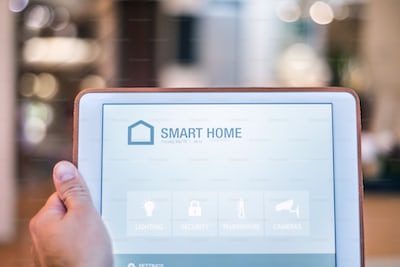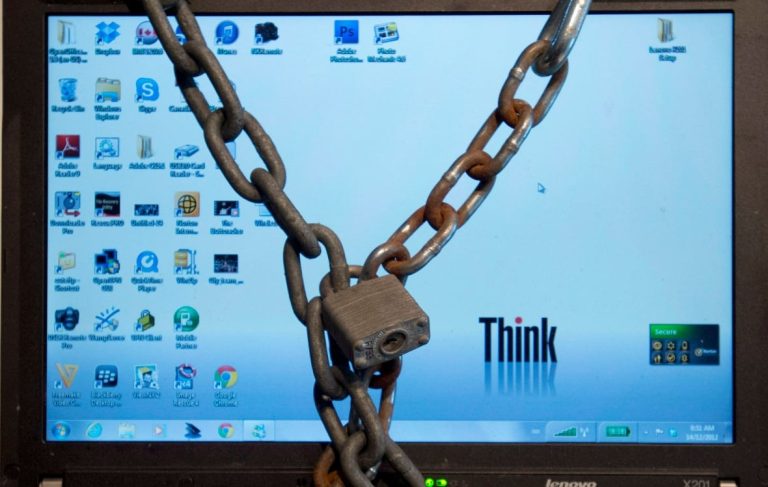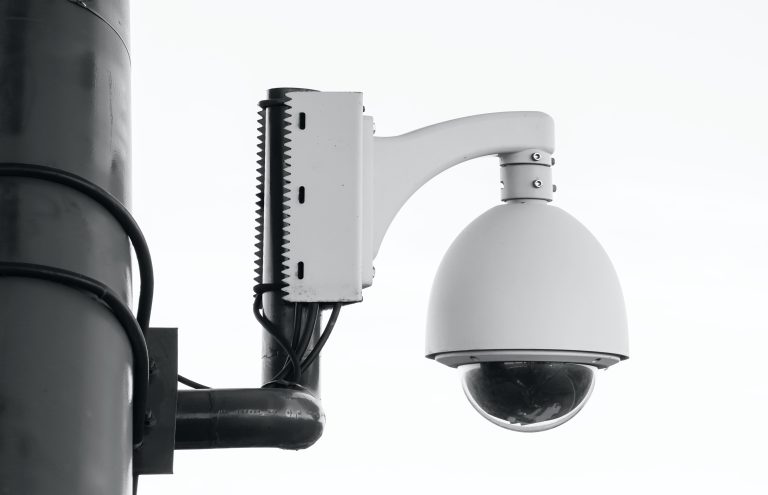How to Secure Your Smart Home Devices from Cyber Attacks |2023|

Smart home devices are an increasingly popular way for people to manage and control their homes remotely, using a range of connected devices that can be controlled via smartphones, tablets, or voice-activated assistants.
These devices include everything from thermostats and lighting systems to security cameras and smart locks.
While smart home appliances offer many benefits, such as convenience, energy savings, and enhanced security, they also come with their own set of vulnerabilities.
Home control systems are essentially connected to the internet, making them vulnerable to cyber attacks from hackers who may attempt to exploit their security weaknesses and gain access to sensitive information or even control the devices themselves.
This is why it is crucial to secure smart home devices and networks. By implementing proper security measures, homeowners can ensure that their smart home devices and networks are protected from cyber threats and that their personal information is kept secure.
The consequences of not securing your smart home devices can be severe, ranging from identity theft and financial loss to physical harm or property damage.
In this article, we will discuss various strategies for securing your smart home devices and networks from cyber attacks.
We will explore the types of risks and threats that smart home appliances face, provide a list of best practices for securing smart home tools, and explain how to monitor and respond to security breaches.
By the end of this article, you will have a better understanding of how to protect your home devices and networks from cyber attacks, and feel more confident in your ability to keep your home and family safe.
Understanding the Risks and Threats of Smart Home Devices
Smart home appliances face a variety of risks and threats from cybercriminals who seek to exploit their vulnerabilities.
These risks and threats can result in serious consequences, including identity theft, financial loss, and even physical harm.
Read also: How AURA Financial Fraud Protection Can Protect You from Identity Theft
In this section, we will delve into the types of cyber threats and risks that smart home appliances may face, explain the potential consequences of these threats, and provide examples of real-world cases where smart home devices have been compromised.
Types of Cyber Threats and Risks
1. Malware
Malware is malicious software that can infect smart home devices and cause harm in a number of ways.
For example, malware may be used to gain access to sensitive information or to control the device remotely.
Malware can also be used to turn smart home devices into a part of a larger network of compromised devices known as a botnet, which can be used for further cyber attacks.
Here are example of 3 Real-life scenarios where malware has infected smart home appliances:
1. In 2018, a group of hackers infected a large number of smart home cameras with malware called DarkSide. The malware allowed the hackers to access the cameras and view live footage of people’s homes. The hackers also used the cameras to launch DDoS attacks against several organizations.
2. In 2016, a group of hackers infected thousands of smart home devices with malware called Mirai. The malware was used to create a botnet that was then used to launch distributed denial-of-service (DDoS) attacks against several major websites, including Twitter, CNN, and The New York Times. Click here to learn more.
3. In 2017, a security researcher discovered that a popular line of smart light bulbs from Chinese manufacturer Tuya were vulnerable to malware attacks. The vulnerability could have allowed hackers to take control of the light bulbs and use them to spy on people in their homes or even to turn them off and on remotely.
2. Hacking
Hacking involves gaining unauthorized access to a smart home device or network by exploiting vulnerabilities in the device’s security protocols.
Hackers may use this access to steal personal information, view live footage from security cameras, or even gain control of devices such as thermostats or lighting systems.
4. Denial of Service Attacks
Denial of service (DoS) attacks are intended to disrupt the normal functioning of a smart home device or network by overwhelming it with traffic or other types of data. This can cause the device to malfunction or shut down, rendering it useless for the owner.
5. Data Breaches
Data breaches can occur when a smart home device or network is compromised, resulting in sensitive personal information being stolen or exposed. This information can be used to steal identities, commit financial fraud, or access other sensitive information such as credit card details.
Consequences of Cyber Threats

1. Identity Theft
Identity theft occurs when cybercriminals gain access to personal information such as names, addresses, and social security numbers. This information can be used to open new lines of credit or even to impersonate the victim.
2. Financial Loss
Cybercriminals may use stolen financial information to make unauthorized purchases or to drain bank accounts. Victims may also be forced to pay for costly repairs or replacements of damaged or compromised devices. Check out how to protect your identity and finance here.
3. Physical Harm
In some cases, cybercriminals may gain access to smart home devices such as security cameras, allowing them to spy on the victim’s activities or gain entry into their homes. This can lead to physical harm, such as theft or assault.
Real-World Examples of Compromised Smart Home Devices
1. Amazon Ring Doorbell Hack
In 2019, it was revealed that Amazon’s Ring doorbell cameras were vulnerable to hacking. Hackers were able to gain access to live footage from cameras and even speak to people through the device’s speaker.
2. Nest Thermostat Hack
In 2016, a hacker gained access to a Nest thermostat and was able to raise the temperature to 90 degrees Fahrenheit, causing significant damage to the home’s heating system.
3. Smart TV Spying
In 2018, it was discovered that some smart TV models were vulnerable to hacking, allowing hackers to spy on users through the TV’s camera and microphone.
These examples highlight the real-world risks and consequences associated with smart home devices. It is crucial for homeowners to understand these risks and take appropriate measures to secure their devices and networks against cyber attacks.
Strategies for Securing Smart Home Appliances
As the number of smart home devices continues to grow, it is becoming increasingly important for homeowners to take proactive measures to secure these tools against cyber attacks. In this section, we will provide a list of best practices for securing smart home devices, discuss the importance of using secure networks and encrypting data, and provide tips for securing specific types of smart home devices.
Best Practices for Securing Smart Home Devices
1. Set Strong Passwords
One of the most important steps homeowners can take to secure their smart devices is to set strong passwords. This means using a combination of upper and lowercase letters, numbers, and special characters. It is also important to avoid using the same password across multiple devices or accounts.
2. Update Firmware
Manufacturers of smart home devices regularly release updates to their firmware to fix bugs, add new features, and address security vulnerabilities. Homeowners should make a habit of regularly checking for firmware updates and installing them as soon as they become available.
3. Enable Two-Factor Authentication
Two-factor authentication provides an extra layer of security by requiring users to provide a second form of identification, such as a fingerprint or a code sent to a mobile device, in addition to a password. This can help prevent unauthorized access to smart home devices.
4. Limit Access to Devices
Homeowners should also take steps to limit access to their smart devices. This can include disabling guest accounts, limiting access to specific devices, and using parental controls to restrict access to certain content.
Using Secure Networks and Encrypting Data
1. Secure Wi-Fi Networks
Smart home devices rely on Wi-Fi networks to connect to the internet and communicate with other devices. It is important to ensure that these networks are secure by using strong passwords, disabling guest networks, and using WPA2 encryption.
2. Use VPNs
Virtual private networks (VPNs) like SurfShark can provide an extra layer of security by encrypting data sent over the internet. This can help prevent cybercriminals from intercepting sensitive information such as passwords or credit card details.
Tips for Securing Specific Types of Smart Home Devices
1. Smart Speakers
Smart speakers such as Amazon Echo or Google Home can be secured by turning off the microphone when it is not in use, limiting access to specific users, and reviewing the device’s privacy settings.
2. Security Cameras
Security cameras can be secured by changing the default password, disabling remote access, and using strong encryption to protect data sent over the internet.
3. Thermostats
Thermostats can be secured by using two-factor authentication, setting up user accounts with different access levels, and disabling remote access when not needed.
Monitoring and Responding to Security Breaches
Despite taking the necessary precautions, there is still a chance that smart home appliances and networks can be compromised. In this section, we will discuss how to detect security breaches in smart home devices and networks and provide guidance on how to respond to a security breach.
Detecting Security Breaches
1. Monitor Network Traffic
Homeowners should regularly monitor their network traffic for any suspicious activity. This can be done using specialized software or by checking the router’s activity logs.
2. Check Device Settings
Homeowners should also periodically check the settings of their smart home appliances to ensure that they have not been changed without their knowledge. This can include checking for new accounts or unfamiliar devices connected to the network.
3. Look for Signs of Compromise
There are several signs that can indicate that a smart home device has been compromised, including unusual behavior or activity, the device not responding or acting strangely, or changes in settings or preferences.
Responding to Security Breaches
1. Disconnect Affected Devices
If a security breach is suspected, the first step is to disconnect the affected device from the network to prevent further damage.
2. Reset Passwords
Homeowners should also reset the passwords for all affected devices and accounts associated with the compromised network. This includes changing the passwords for Wi-Fi networks and the associated router.
3. Contact Support
If the security breach involves a specific device or service, you should contact the manufacturer’s support team for guidance and assistance. Also be aware of customer support scams.
Warning Signs of Compromised Smart Home Devices
1. Unusual Activity
If a smart home appliance starts behaving strangely, such as turning on or off on its own or sending unusual messages, this could be a sign that the device has been compromised.
2. Changes in Settings or Preferences
If the settings or preferences of a smart home device have been changed without your knowledge, this could indicate a security breach.
3. Suspicious Network Activity
If the network activity logs show unusual or suspicious traffic, this could indicate that a smart home device has been compromised.
4. Unfamiliar Devices or Accounts
If new devices or accounts appear on the network that the you did not add, this could be a sign of unauthorized access.
5. Slow Performance
If a smart home device suddenly becomes slower or less responsive than usual, this could be a sign that it has been compromised.
V. Conclusion

So far, we have explored the risks and threats that smart home devices face from cyber attacks and provided strategies for securing these devices and networks.
We have discussed the importance of using secure passwords, updating firmware, enabling two-factor authentication, and encrypting data. Additionally, we have provided tips for securing specific types of smart home devices, such as smart speakers, security cameras, or thermostats.
We have also explained how to detect security breaches in smart home devices and networks, and provided guidance on how to respond to a security breach. Lastly, we have listed warning signs that indicate a smart home device has been compromised.
It is crucial for homeowners to be aware of the potential risks and threats that their smart home devices face and take proactive steps to protect them.
By implementing the strategies and best practices discussed in this article, homeowners can significantly reduce the risk of cyber attacks and protect their privacy, finances, and physical safety.
We urge you to take action to secure your smart home devices and networks, including regularly updating firmware, using strong passwords, enabling two-factor authentication, and monitoring network traffic.
With these precautions in place, you can enjoy the benefits of smart home technology with greater peace of mind.







